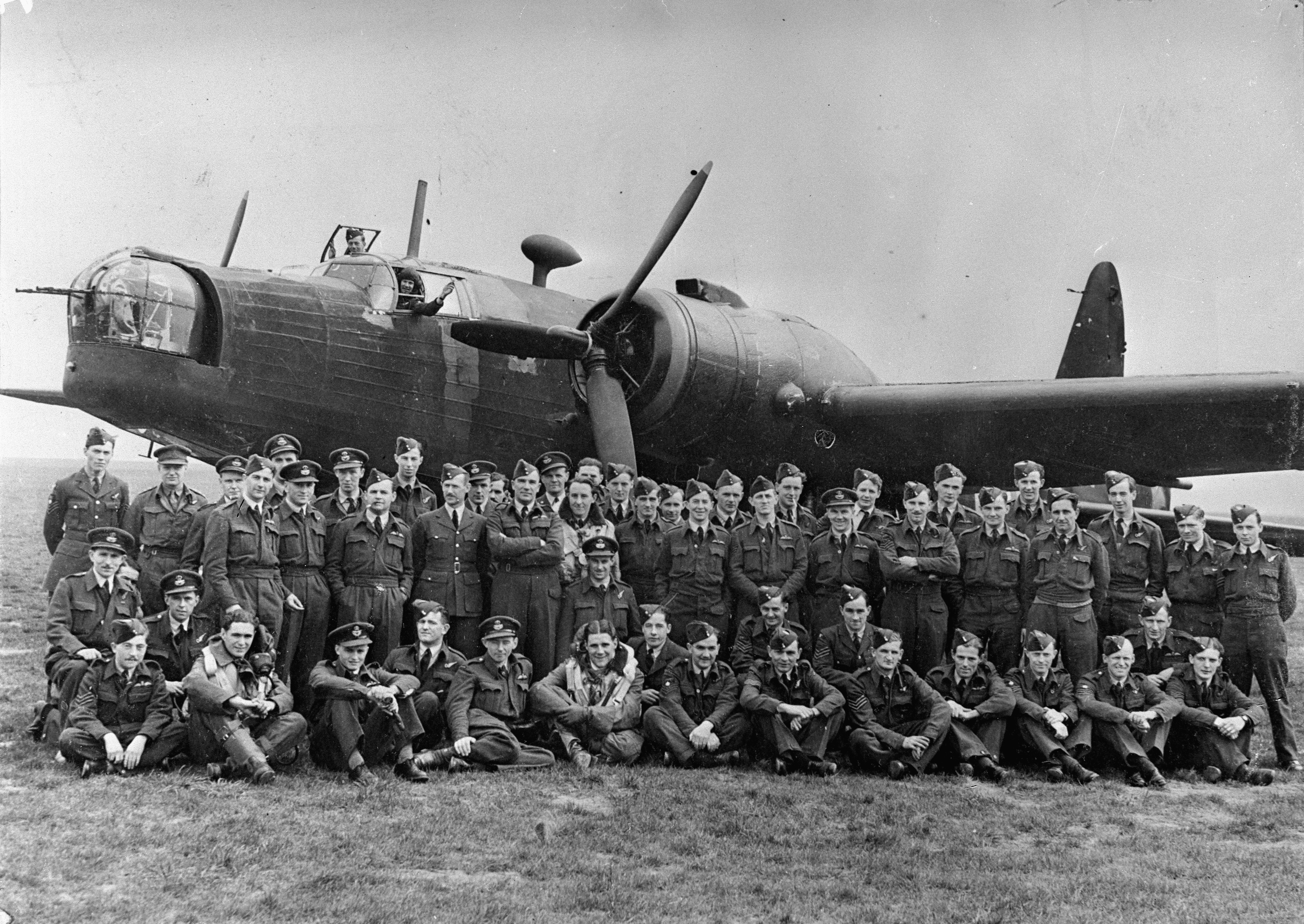I am pleased to announce the addition to the top menu of a ‘Nominal Roll’ section.
I realise that I have already been working on this project for about a year and a half, gathering information, researching and creating a database. Based on what I have so far done and what therefore seems to remain to do, I now know that is impossible to even, at this point, estimate a completion date.
To this end, I have decided, in the first instance, to put up the original ‘1st occurrence’ list that the database is based on. This list, as the name suggests represents the first occurrence of every individual name that appears in the original crew database. My focus has also further refined – initially I took the reluctant decision to only focus on aircrew, based on the almost complete absence of a verifiable list of groundcrew. I have now taken the decision to focus on aircrew who flew at least 1 recorded Op or post War (Europe) sortie with the Squadron. The Form 540 records, particularly from the very well administered period of 1943, shows the very high number of movements in and out of the Squadron by aircrew who never actually flew operationally. The only exception to this new focus will be those individuals that were killed whilst with the Squadron, but whose death did not occur whilst on Ops.
On inspection, you will see that in its first iteration, the list is very basic, presenting an individual as follows:
ABBOT
D.A. Abbot. RNZAF NZ401219 – Air Gunner
Whilst overall, I have more information for most individuals than this, it is not constant or complete. To this end, I think it is better to provide this first complete list and then add/ edit it, regarding extra information than delay publishing for a mythical point of completion that might never be achieved. This current entry should be considered, relative, to what I believe is entirely achievable for the Squadron based on gathered information on my own Father, below:
SOMMERVILLE
Robert Douglas ‘Jock’ Sommerville RAF 1562617/ 161049
Arrived at RAF Mepal on Wednesday, 21 July 1943, from 1651 H.C.U., Waterbeach aged 20
Trained as Air Bomber
Op total with Squadron, 21
Undertook 21 Ops with AJ Mayfield’s crew as A/B
Tour History
30/07/1943 – Mining off the Frisian Islands, 02/08/1943 – Attack Against Targets at Hamburg, 06/08/1943 – Mining in the Gironde Estuary, 10/08/1943 – Attack Against Targets at Nurenburg, 12/08/1943 – Attack Against Targets at Turin, 16/08/1943 – Attack Against Targets at Turin, 17/08/1943 – Attack Against Targets at Peenemunde, 27/08/1943 – Attack Against Targets at Nuremburg, 30/08/1943 – Attack Against Targets at Munchen-Gladbach, 31/08/1943 – Attack Against Targets at Berlin, 05/09/1943 – Attack Against Targets at Mannheim, 08/09/1943 – Attack Against Targets at Boulogne, 15/09/1943 – Attack Against Targets at Montlucon, 16/09/1943 – Attack Against Targets at Modene, 22/09/1943 – Attack Against Targets at Hanover, 23/09/1943 – Attack Against Targets at Mannheim, 03/10/1943 – Attack Against Targets at Kassel, 04/10/1943 – Attack Against Targets at Frankfurt, 08/10/1943 – Attack Against Targets at Bremen, 18/11/1943 – Attack Against Targets at Mannheim, 19/11/1943 – Attack Against Targets at Leverkusen.
The Mayfield crew were screened on direct orders from 3 Group Headquarters, prior to the regulation 1st Tour total of 30 Ops being completed. The news was delivered to the crew on the morning of the 20th of November, along with one other crew, as yet to be identified. It would appear, the decision to screen the crew at this point in their tour, was to show the remaining crews that there was in fact a chance to survive the ‘chop’ Squadron, as 75(NZ) Squadron was beginning to be described, at a point in time where crew losses were beginning to mount.
Time with Squadron, 4 months 24 days (arrival to departure date)
Posted to No.3 Lancaster Finishing School, Feltwell, for instructional duties Wednesday, 15 December 1943.
2nd Tour
Arrived at RAF Mepal on Thursday, 25 January 1945 from No.3 Lancaster Finishing School, Feltwell, age 22
Op total with Squadron, 21 – plus 1 dnc, (02/03/45 Attack Against Cologne)
Undertook 22 Ops with VJ Zinzan’s crew as A/B
Tour History
01/02/1945 – Attack Against Munchen Gladbach, 02/02/1945 – Attack Against Wiesbaden, 09/02/1945 – Attack Against Hohenbudburg, 13/02/1945 – Attack Against Dresden, 14/02/1945 – Attack Against Chemnitz, 16/02/1945 – Attack Against Wesel, 19/02/1945 – Attack Against Wesel, 20/02/1945 – Attack Against Dortmund, 02/03/1945 – Attack Against Cologne (DNC), 04/03/1945 – Attack Against Wanne Eickel, 06/03/1945 – Attack Against Salzbergen, 07/03/1945 – Attack Against Dessau, 09/03/1945 – Attack Against Datteln, 10/03/1945 – Attack Against Gelsenkirchen Buer, 12/03/1945 – Attack Against Dortmund, 14/03/1945 – Attack Against Heinrich Hutte, 20/03/1945 – Attack Against Hamm, 23/03/1945 – Attack Against Wesel, 29/03/1945 – Attack Against Salzgitter, 04/04/1945 – Attack on Meresburg, 13/04/1945 – Attack on Kiel, 14/04/1945 – Attack on Potsdam.
Time with Squadron, 3 months 9 days (arrival to departure)
It also strikes me that by making this basic list available, there is far greater opportunity for new information to be provided by visitors to the site. I have activated comments on all pages of the list with the hope that this provides the easiest way for people to add information that can then be added to the database.
One sobering fact that has already come to light, based on a total count in the list is that almost 1/3 of individuals that flew with the Squadron, died in it.
I am currently keen to get the following information on individuals:
Date of Birth
Dates and location of training bases prior to 75(NZ) Squadron
Post 75(NZ) Squadron postings
Post War career/ achievements
Date of death
Please have a look at the list and if you feel you have any useful information, please leave a comment or email me.
Either go up to the top menu or go to the list here.









